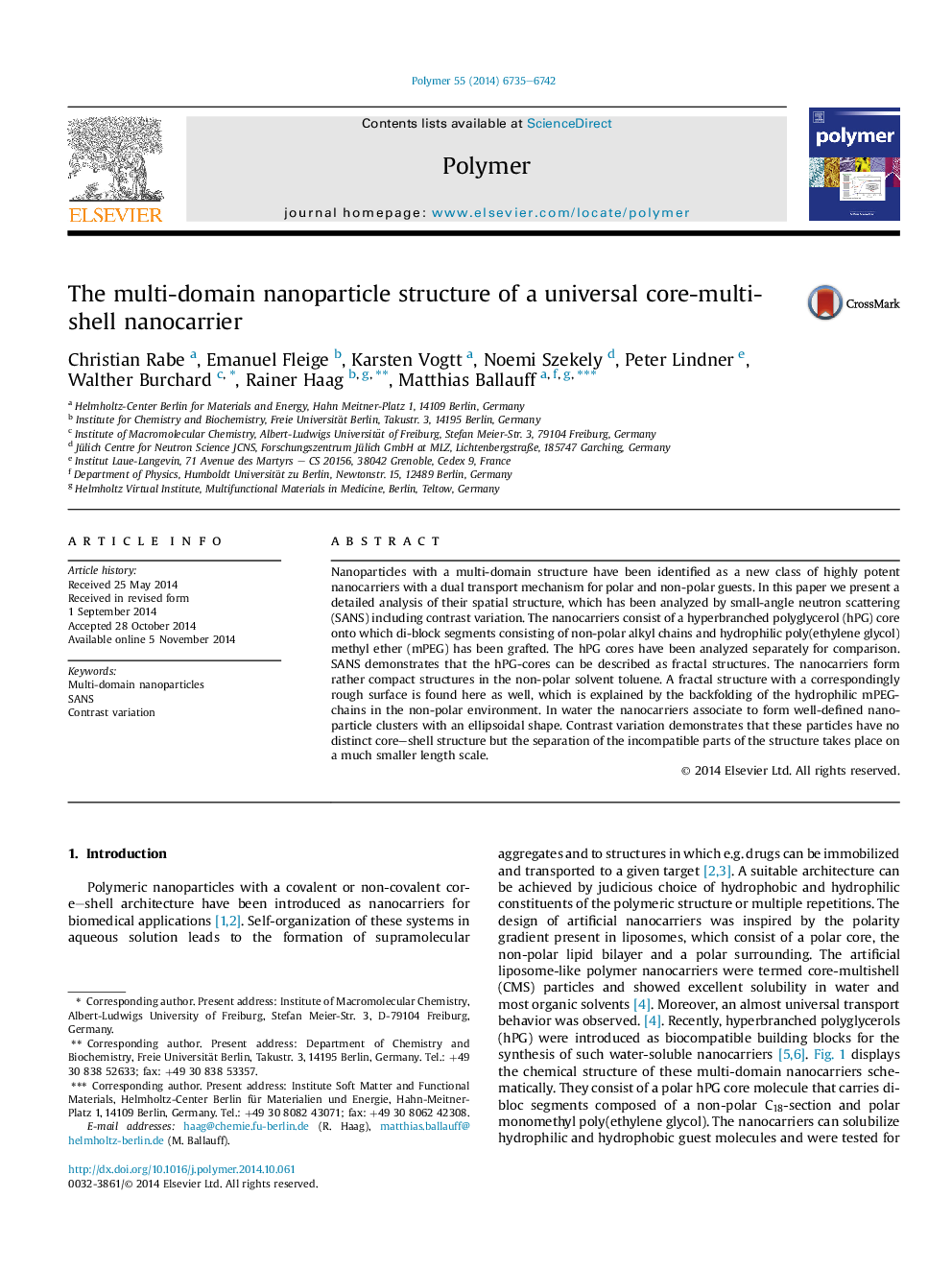| Article ID | Journal | Published Year | Pages | File Type |
|---|---|---|---|---|
| 5180801 | Polymer | 2014 | 8 Pages |
â¢Spatial structure analysis of Multi-Domain (MD) nanoparticles by complementary probes.â¢Fractal approach used for hyperbranched polyglycerol and MD-nanoparticles in toluene.â¢Non-permanent aggregates formed due to a microscopic phase separation within the molecular structure.â¢The particles do not exhibit a conventional core-shell architecture.
Nanoparticles with a multi-domain structure have been identified as a new class of highly potent nanocarriers with a dual transport mechanism for polar and non-polar guests. In this paper we present a detailed analysis of their spatial structure, which has been analyzed by small-angle neutron scattering (SANS) including contrast variation. The nanocarriers consist of a hyperbranched polyglycerol (hPG) core onto which di-block segments consisting of non-polar alkyl chains and hydrophilic poly(ethylene glycol) methyl ether (mPEG) has been grafted. The hPG cores have been analyzed separately for comparison. SANS demonstrates that the hPG-cores can be described as fractal structures. The nanocarriers form rather compact structures in the non-polar solvent toluene. A fractal structure with a correspondingly rough surface is found here as well, which is explained by the backfolding of the hydrophilic mPEG-chains in the non-polar environment. In water the nanocarriers associate to form well-defined nanoparticle clusters with an ellipsoidal shape. Contrast variation demonstrates that these particles have no distinct core-shell structure but the separation of the incompatible parts of the structure takes place on a much smaller length scale.
Graphical abstractDownload high-res image (242KB)Download full-size image
